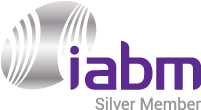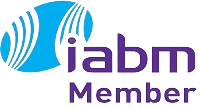Nimbra 600
Nimbra 600

Designed from the ground up for high-quality media transport the Nimbra 600 is a highly reliable video and audio processing, monitoring, and IP transmission platform. Support for any underlying network, including IP, wavelength systems and dark fiber, means you are never limited by existing infrastructure.
Available in ultra-compact and high density chassis options, the modern modular design leverages multi-purpose media acceleration, media processing modules and IP networking modules to allow each node to be tailored to individual deployment needs. Redundant switches, redundant node controllers and redundant power supplies ensure high availability.
Configure the Nimbra 600 either as a compact multi-function media access solution or as a powerful edge processing and acceleration access to complement the Nimbra 1000.
Additional information
Related Products:


Zynq™ UltraScale+™ MPSoC EV


Kintex™ UltraScale+™ FPGA Family


Nimbra 600


UDS, Series 2, and 4K 12G...



Raptor


Versal ™ Prime Series Gen 2...




DVG (Digital Video Gateway)

Zynq™ UltraScale+™ MPSoC EV
The Zynq UltraScale+ MPSoC EV devices are particularly suited to a wide range of broadcast and media applications, from camera encoding to mobile wireless video systems, and contribution IRDs to live streaming encoders:
- Configurable and dynamically adjustable codec
- Integrate with a wide portfolio of AMD and partner IP cores such as 12G-SDI, ST 2110, IPMX, NDI, Dante AV Ultra, HDMI, DisplayPort etc.
- Up to 4K60 4:2:2 10-bit H.264/H.265 simultaneous encode + decode
- Multichannel support up to 4K60 (e.g. 2x 1080p60 or 4x 1080p30...)
- Ultra-low-latency mode of <35ms glass-to-glass
- Total device power for a single pipeline as low as 8.5W
Kintex™ UltraScale+™ FPGA Family
Kintex™ UltraScale+™ devices provide the best price/performance/watt balance delivering the most cost-effective solution for AV interfacing, packet processing and DSP-intensive functions, and is well suited for enabling the transition to IP-based networks.
- Up to 1.2M System Logic Cells
- UltraRAM for on-chip memory integration
- Integrated 100G Ethernet MAC with RS-FEC
- 6.3 TeraMACs of DSP compute performance
- Up to 33 Gbps transceivers capable of 12G-SDI and 10GE/25GE
- VCXO and fractional PLL integration reduces external clocking component cost
- AMD partner IP available for ST 2110 and NMOS
Nimbra 600
Designed from the ground up for high-quality media transport the Nimbra 600 is a highly reliable video and audio processing, monitoring, and IP transmission platform. Support for any underlying network, including IP, wavelength systems and dark fiber, means you are never limited by existing infrastructure.
Available in ultra-compact and high density chassis options, the modern modular design leverages multi-purpose media acceleration, media processing modules and IP networking modules to allow each node to be tailored to individual deployment needs. Redundant switches, redundant node controllers and redundant power supplies ensure high availability.
Configure the Nimbra 600 either as a compact multi-function media access solution or as a powerful edge processing and acceleration access to complement the Nimbra 1000.
UDS, Series 2, and 4K 12G UHD Routing Switchers and Sync Generators
Newt
Compact & Robust- Compact & robust signal conversion and processing of many formats from HD to UHD.
Open Control - Open control gives you the freedom to run Newt from our DashBoard™ control system, and/or seamlessly from many 3rd-party control systems.
Software Defined - What you need, when you need it: software defined processing enables multiple uses and functions.
Quiet - Newt is the strong silent type, with studio applications in mind. Unlike other IP conversion products with fans that scream loudly, you’ll barely hear a purr from Newt.
Goes Anywhere - Flexible mounting options enable Newt to scale any wall, zip-tie to a post, hide under a desk, behind a display, or for three of them to sit comfortably on an optional rack shelf.
Raptor
Raptor lifts openGear to new purposes, adapting software defined modular processing to native IP or hybrid IP/SDI infrastructures. Raptor is fluent in many open control protocols such as NMOS, EmBER+, and DashBoard (to name but a few), thus giving you the freedom to soar through the IP environment of your choice.
This openGear appliance’s high-performance I/O and benchmark IP interoperability ensure a lasting investment designed to adapt to evolving IP standards and control requirements.
Versal ™ Prime Series Gen 2 adaptive SoCs
Designed for a broad range of applications including 8K video processing, the Versal Prime Series Gen 2 devices offer expanded hardened IP to complement the programable logic and processing system. This new IP includes hardened video encode & decode, DDR5/LPDDR5X memory controllers, 100G Ethernet, PCIe® Gen5, and an integrated Arm Mali™-G78AE GPU, enabling next-generation applications within tight area & power constraints.
From capturing content and enabling virtual production to creating live events, Versal Prime Series Gen 2 enables Broadcast and Pro AV equipment suppliers to deliver ever more compelling experiences thanks to a unique combination of dedicated acceleration, flexible interfaces, and adaptive computing that’s ideal for real-time video & audio processing.
Each video codec unit (VCU) tile offers:
- Hardened bidirectional encoding, decoding and transcoding
- Support for HEVC & AVC up to 4K60, 4:4:4, 12-bit
- Up to two VCU tiles per device; aggregate both tiles for limited 8k30 support
RouteMaster Lite
RouteMaster Lite brings familiar video routing capabilities to Newtek’s NDI® video. Based on our proven RouteMaster system, it gives operators a range of familiar control interfaces for controlling video switching.
Switching is suitable for all live, on-air applications, making RouteMaster Lite ideal for fast manual intervention.
No video streams are passed through the router system, instead traffic is redirected at the network level. This means only minimal bandwidth and processor requirements are needed, regardless of the number of video streams and resolution. There’s also no additional video delay through the system. Additionally, RouteMaster Lite does not become a central point of failure: If the router system fails for any reason, video continues to flow from sources to destinations uninterrupted.
RouteMaster Lite is ideal for OB and production environments, supporting up to 20 sources and 20 destinations. For larger systems with more complex requirements, the same NDI switching technology is available in the full-featured RouteMaster system.
The built-in GUI is ideal for preset and take switching, showing resizeable video previews and audio metering of the current video and the chosen source.
External Control
While control from the built-in GUI is fast and easy, it’s not ideal for all situations. Therefore RouteMaster lite supports external control from:
- Web Panels served by the integrated web server
- Familiar hardware panels like Blackmagic Design Smart Control
- Or, third-party software which uses the Blackmagic VideoHub protocol
You can use all these control methods simultaneously, with router status immediately visible to all users.
Video Player00:0000:15
RouteMaster
RouteMaster uses Rascular’s proven router control and emulation technology to form a powerful yet flexible router control system. Built on tried and tested software modules, RouteMaster can be used with a wide range of video and audio routers from all major manufacturers.
It’s equally suitable for new router installations or increasing the capabilities – and lifetime – of existing systems. You can add third-party hardware panels to existing systems, add IP connectivity to older serial routers, or simply increase the number of control ports available.
The integrated web server means operators can control routers from any web browser, using custom control panels built with Helm Designer. And because it’s built on HTML5 standards, there’s no need for browser plugins.
DVG (Digital Video Gateway)
It’s the first all-in-one gateway product enabling smooth connectivity between legacy and IP interfaces, video delivery over IP protocols (DVP, RIST, ZiXi, SRT, and SMPTE 2022-1), and a variety of media streaming protocols MPEG TS, RTMP, HLS, and DASH. Clients can use DVG to connect to a service in AWS over RIST or to service in Microsoft Azure over SRT or they can leverage DVG to connect between services using different video streaming or delivery protocols.
The DVG offers the six essential ingredients for reliable broadcast over IP ecosystems: Quality, Reliability, Connectivity, Security, Operational Efficiency, Versatility, and Future Proof. It can run on any hardware platform in a Doker container, as a virtual machine, or a downloadable ISO.
Helm
Here at Rascular we have Helm, a solution that’s been deployed by facilities around the world to address multiple control workflow requirements across Master Control and beyond.
Helm is a PC-based application that allows users and systems integrators to design and build customised control panels that, in their simplest form, sit alongside automation and provide manual control of a single device. For example, this could be a master control switcher, with the user panel exposing only those controls needed for monitoring and manual intervention. In more complex deployments, Helm is used to provide manual, supervisory override capabilities in automated, multi-device (branding engine, multi-viewer, router, video server and modular gear), multi-channel, HD/SD environments with pods of channels. This includes by some of the world’s largest playout companies.
The scalability of Helm makes it a go-to solution for companies wishing to invest in future-proof technology.




